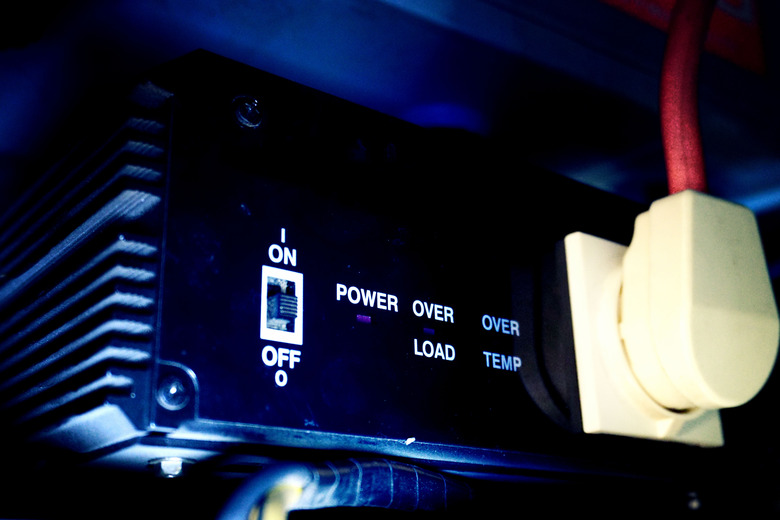How To Make A 12 Volt Heater
An electric heater functions much like a light bulb. When you connect a wire element between the positive and negative terminals of a power source, it creates light or – more importantly for heaters – heat. While making a light bulb at home is not feasible, making a small heater with a 12-volt battery, a switch and some wire is an easy educational experiment. Just be careful while doing electrical work.
TL;DR (Too Long; Didn't Read)
Making your own 12-volt heater is easy, but it can be dangerous when you work by yourself. Wear protective gloves and be cautious while working with power tools, hot solder and exposed wire. The heating element can be red hot; don't touch it while the power is on and keep it away from flammable objects.
Things Needed
- DC Fan
- Wooden panels
- 1 mm nichrome wire
- Electrical wire
- On/Off switch
- Wire mesh
- 12V battery
- Electrical tape
- Hot-glue gun
- Knife or sharp scissors
- Soldering iron and solder
- Nuts and bolts
- Drill
1. Prepare the Enclosure
Before working with any batteries or wire, prepare the enclosure. With wooden panels, build an open, U-shaped box. Place the DC fan at one end of the enclosure with the wires trailing outward and use a hot glue gun to secure it to the wood.
2. Drill Holes and Coil Wire
Drill one hole in each side of the enclosure in the middle of the panel. Place a metal bolt in each hole and secure each with a nut. Using a pen, screwdriver or similar object, make a coil with a length of nichrome wire, leaving uncoiled wire at each end of the length. Use a wire roughly one millimeter thick. If the wire is much thinner, it may melt; if it's much thicker, it won't heat up enough due to the electrical property of resistance.
3. Attach Coiled Wire and Other Wires
Loop each end of the nichrome wire around a bolt, so that the wire coil runs through the center of the enclosure. Then, using two separate lengths of electrical wire, loop one end of one electrical wire so that it crosses over and touches either but not both ends of the nichrome wire length. Run the remaining electrical wire through the holes at each corner of the DC fan, so that all the wires and cables are at the same end of the enclosure.
4. Complete Enclosure and Wire the Fan
Glue wire mesh at the end of the enclosure opposite the fan exhaust. Then glue one last wooden panel to close the enclosure. Using a knife or sharp scissors to strip a small amount of plastic from the fan's wire, connect the two electrical wires to the fan wire. Then, connect two additional lengths of electrical wire to the fan's wire. Secure and cover the exposed wires with electrical tape.
5. Install On/Off Switch and Connect Battery
Finally, hot glue the On/Off switch to the side of the enclosure and solder the ends of the fan wire to each of the switch's terminals. Connect the two spare lengths of electrical wire to the terminals of the 12-volt battery. If everything is wired correctly, the nichrome wire coil begins to glow red, and the fan blows warm air outward – completing the homemade heater.
For visual references, watch the videos in the Resources section.
Cite This Article
MLA
Flournoy, Blake. "How To Make A 12 Volt Heater" sciencing.com, https://www.sciencing.com/make-12-volt-heater-7958025/. 13 April 2018.
APA
Flournoy, Blake. (2018, April 13). How To Make A 12 Volt Heater. sciencing.com. Retrieved from https://www.sciencing.com/make-12-volt-heater-7958025/
Chicago
Flournoy, Blake. How To Make A 12 Volt Heater last modified March 24, 2022. https://www.sciencing.com/make-12-volt-heater-7958025/
